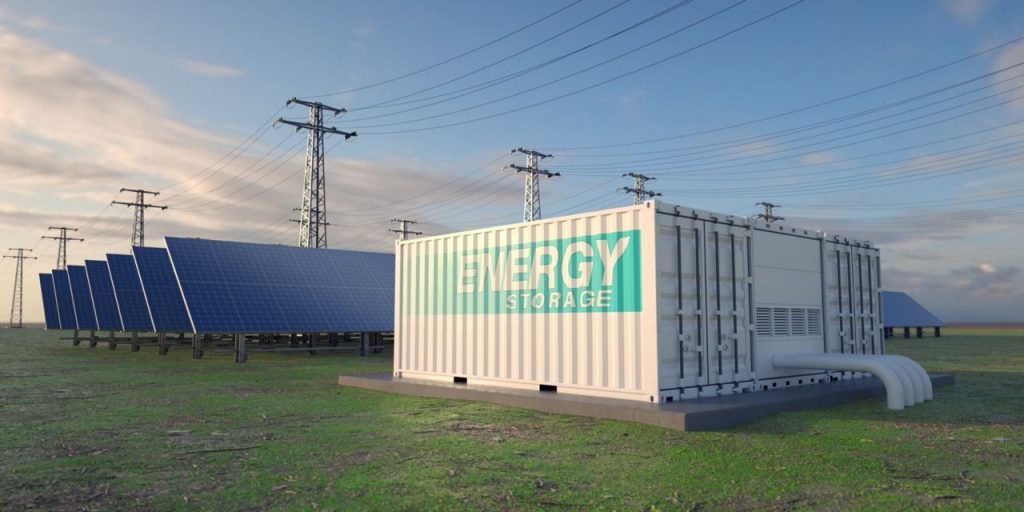Energetics is the science of energy and the process of using energy. DevOps in Energetics is the new direction of how we can optimise the processes. In the last decade, there has been an exponential growth in the use of technology in the energy sector. In the coming years, this is expected to continue, driven by the need for improved efficiency, cost reductions and the need for greater resilience. Without a doubt, DevOps is changing the way that the world works. Those who can bring technology and real-world problems together can help seal the future of their businesses. This blog post looks at how DevOps works in the energy industry.

What is DevOps and what are the technologies?
DevOps is a software development process that emphasizes communication, collaboration and integration between software developers and information technology (IT) professionals. The goal of DevOps is to produce high-quality software products in a short amount of time.
Developers of the DevOps approach aim to improve the flow of information between software developers and IT professionals by breaking down organizational barriers, automating manual tasks, and ensuring that quality control processes are in place throughout the development process.
DevOps is a philosophy and set of practices that enable teams to better collaborate together. It encourages communication, collaboration, integration, and automation. In essence, it’s a cultural movement that strives to improve the way organizations develop, deliver and operate the software.

TECHNOLOGIES
Software is created by programmers, and developers are responsible for building applications and implementing the various functionalities. Developers often end up working with multiple teams such as QA or operations to get the application up and running in a production environment. This is where DevOps comes in because its goal is to help developers work with all these different teams so they can get their applications into production faster. The diagram below shows how all these terms are related:
The tools that DevOps practitioners use include:
● Continuous Integration (CI) – software development process in which code changes are automatically compiled and tested as part of a software release cycle. This allows for bug fixes to be deployed faster, with less risk of errors being introduced via human intervention.
● Continuous Delivery (CD) – the practice of automating the software delivery process so that teams can deploy changes much more rapidly without needing manual release management approvals or coordination across different team members.

What is the DevOps method?
The DevOps method is a software development approach that uses a set of tools and techniques to improve communication, collaboration, and continuous integration between software developers and information technology (IT) professionals. A DevOps environment reduces the amount of time it takes to release new applications, which makes it easier for businesses to respond to changing customer preferences.
Other names for DevOps include agile IT, continuous delivery, and continuous integration. The DevOps method is based on the theory that constant communication between different departments will lead to improved products, services, or features. Some of the tools used in this method include version control systems, bug tracking systems, and virtualization software. The DevOps methodology is used by many companies in the tech industry, including Google, Facebook, and Amazon.”
What are the main concepts of DevOps?
DevOps is a style of thought, it’s a shift in how we view code and infrastructure. DevOps promotes communication and collaboration between separate development and operations teams.
➢ Measurement: Each team should be able to measure its own performance using metrics. One common metric is lead time, which measures the time from when an idea for a change is proposed until it’s implemented into production.
➢ Automation: The use of tools, such as build automation software, configuration management software and other software tools helps automate tasks that are performed manually by humans. For example, using this kind of tool can help minimize the time required for deployment by automating tasks like building new versions of applications and configuring them for production environments.
➢ Continuous integration: This means having developers integrate their work frequently with the rest of the team. By doing so, they can be sure that their work is ready to be deployed at any time.
➢ Continuous testing: The goal of continuous testing is to get feedback on your product as early as possible. The sooner you know about errors, the easier it will be to fix them.
➢ Continuous delivery: This is when you deploy your new features to production as soon as they are ready, without waiting for a special event like a release date. By doing this frequently, you reduce the risk of introducing errors into your production environment.

How can DevOps be implemented in energy companies?
The steps on how to implement cloud computing include the following:
An assessment of workflows, applications, and services
A thorough assessment will provide you with the information you need to migrate your workflow, applications, and service. As part of the assessment, the assessment determines the places in which digital innovation can be incorporated. Doing so will allow you to quantify the benefits of cloud migration. It will also provide information on applications and workloads that are ready for the cloud.
Developing a strategy for cloud computing
By implementing a cloud computing strategy, you can make migration planning easier. However, migration to the cloud is a highly technical and complex process. An expert plan must be developed to make it successful. A cloud computing guide should be used to ensure standards are met.
Determine the goals of the organization
A cloud strategy can be developed by defining your business objectives. When you are planning a cloud strategy, this is the first step you should take. When you define the objectives of your business, you can determine the realistic goals based on them and the business capabilities you need to achieve them
Analyze the IT infrastructure
In creating a cloud computing strategy, it is critical to focus on the business aspect and not forget about the technical side of cloud computing. When it comes to establishing a cloud computing strategy, a cloud computing architecture cannot be ignored. For cloud computing systems to be successful, it is important to incorporate the business architecture into the development of a technical roadmap for the implementation of cloud computing systems.
Risk Assessment
After having conducted the fit-gap analysis and forecast, as well as analyzing the business objectives set forth, the organization should assess the risks and exposure involved in implementing the cloud strategy.
Fit-Gap Analysis
Cloud service providers can use fit-gap analysis to identify any issues that could adversely affect their services. As part of the evaluation and implementation of a planned cloud strategy’s secure and reliable implementation, an in-depth assessment of the cloud investment and architectural
planning is required.

How do you as an owner help to scale your company by implementing DevOps solutions?
An organization can benefit from a DevOps initiative by scaling efficiently and building systems more quickly. In addition to improving software quality, DevOps initiatives can help an organization maximize its success. It is extremely helpful that Trello provides a visual representation of your development strategy that you can share with all your team members, making it easy for everyone to be on the same page and work towards the same goals.
It’s especially convenient if you’ve got multiple teams of people working on the same project or they’re in different departments. It is also possible for you to utilize Trello’s advanced tools to create Kanban boards that correlate with your DevOps strategy. The task management tools will allow you to track progress, set due dates, leave comments and attach documents to any card within the board. In addition to Trello and Kanban boards, there are few other useful tools that can give you everything you need to develop a successful DevOps strategy that will take your business to the next level and make it easier for you to scale your business than ever before.
How DevOps is saving money, keeping data, and reducing risk?
DevOps is an approach to software development that integrates the entire process. It brings together developers, quality assurance (QA) engineers, and operations teams in an effort to make sure that new features/software is correct, stable, secure, and provides a positive experience for the end-users. DevOps also attempts to facilitate communication between these teams in order to help them work together more effectively. By eliminating silos and reducing overhead, DevOps can help companies reduce costs and be more efficient. Moreover, by speeding up the time-to-market (TTM), companies can increase their agility and innovation which is crucial in today’s competitive business environment.
By reducing engineers’ manual work and shortening the time to market, the DevOps cycle itself essentially lowers costs. Building, testing, and deploying applications can be done at a faster pace and with fewer mistakes. A cloud infrastructure that is automated can reduce costs by optimizing the use of cloud resources.
In today’s environment where applications are developed and deployed rapidly, it is imperative that organizations ensure that their data and systems are protected from threats such as malware/viruses, human error, cyber-attacks, etc. Even small issues can cause huge losses for organizations which often have a direct impact on their bottom line. But DevOps helps improve the efficiency of organizations by improving their ability to identify vulnerabilities at an early stage so that the same can be corrected before there is a breach in security or loss of data.



